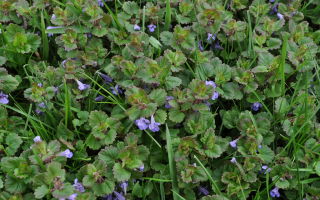Content
The healing properties and contraindications to ivy budra have long been studied by adherents of traditional medicine. It is a herbaceous plant, the stem of which grows up to 50 cm in length. It is a perennial crop with a rich chemical composition, which determines its useful properties. Like any other medicinal plant, ivy budra has contraindications for use.
The chemical composition of ivy budra
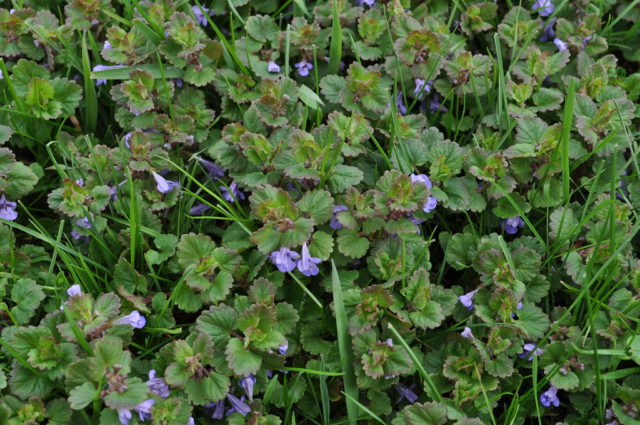
The culture grows in meadows, forests, and bushes. It can be found on plots in the form of a weed. Ivy buddha is a rather aromatic plant, especially during the flowering period. The flowers are small, have a tubular structure, a shade from lilac to deep purple. Collected in inflorescences of 3-4 pieces in the axils of the upper and middle leaf plates. The flowering of the plant lasts the first half of summer. Budra fruit in the form of an oval brown shade.
Distribution area - all of Europe, Transcaucasia, some regions of China, Asia. In Russia, ivy budra can be found in the European part, Dagestan, the North Caucasus, in some Siberian regions and in the Far East.
Although the ivy budra contains toxic components, the plant has a lot of useful properties. Here are the main substances of budra herb:
- valuable essential oils;
- acids and amino acids;
- resinous, tannins;
- saponins, aldehydes;
- carotenoids;
- choline;
- vitamin C;
- alkaloids;
- minerals - manganese, zinc, titanium, potassium, molybdenum.
The beneficial ingredients are concentrated in the leaves and stems. The best time to harvest ivy budra is the flowering period. The activity of the main substances of the herb is at its highest at this time.
Useful properties of Budra
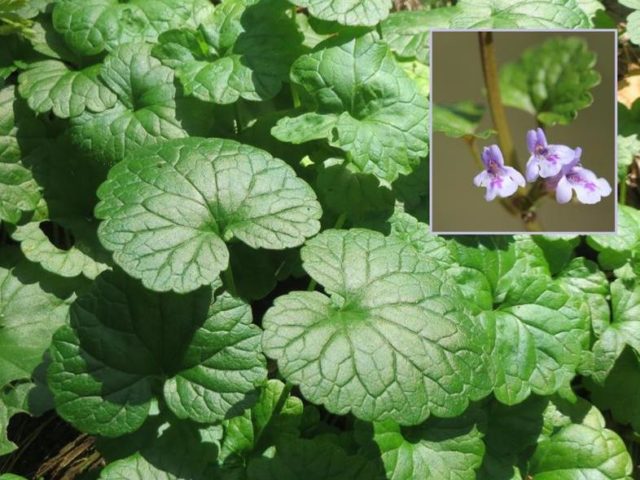
On the territory of Russia, the herb is used exclusively as an additional remedy for the treatment of certain diseases within the framework of traditional medicine. In a number of Western countries, this herb is a fairly popular and effective ingredient recognized by official medicine. The main useful properties of ivy budra include:
- the herb has a positive effect on the cardiovascular system, gastrointestinal tract, respiratory system, central nervous system;
- prevents the formation of cholesterol plaques;
- helps active tissue regeneration;
- possesses hemostatic, diaphoretic, anti-inflammatory, diuretic and antiseptic properties;
- normalizes metabolic processes in the body;
- improves the functioning of the visual organs.
Ivy budra has a positive effect on the condition of women during menopause, because it is able to stabilize hormonal levels.In addition, the herb has a tonic effect, increases the body's resistance, tones up during the recovery period after an illness, actively fights parasites, slows down the growth and development of cancer cells.
The harm of ivy budra
The herb is poisonous, therefore, given this quality of the plant, it should be taken in the strictly recommended doses. The harmful effects of Budra can be felt with an overdose. It manifests itself as dizziness, headache, muscle cramps, breathing and heart rhythm problems, and excessive sweating. Nausea, vomiting, and pulmonary edema are common.
If you suspect grass poisoning, call an ambulance, drink activated charcoal or a similar drug, and try to induce vomiting. In addition to poisoning provoked by an overdose, the plant has contraindications for use, which must be carefully studied.
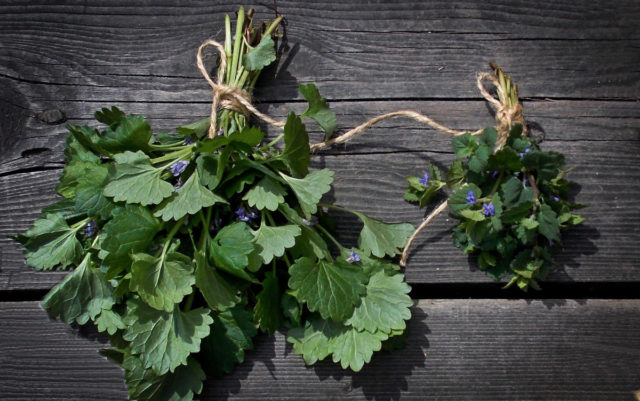
Contraindications to ivy bud
In addition to being useful, ivy buddra can be harmful, since it belongs to poisonous plants. Definitely, it cannot be used by pregnant women and during lactation. The rest of the most important contraindications include:
- diseases of the gastrointestinal tract, especially low acidity of gastric juice;
- hypertension;
- increased blood clotting, a tendency to form blood clots;
- some diseases of the kidneys and liver.
Also, contraindications include childhood, individual intolerance and the body's tendency to allergic reactions.
Rules for the use of ivy budra
Herb for medicinal purposes should be purchased at a pharmacy or prepared yourself. Then the benefits will not be in doubt. The highest concentration of useful components during the flowering period, but budra can be harvested until October, while the plant is developing. The stems should be cut at a height of about 5 cm from the ground. Before starting drying, the raw material must be sorted out, removing those stems and leaves that are damaged by insects, have defects and signs of disease.
Dry in a dry, well-ventilated area, without using lighting fixtures. During the drying process, the grass must be carefully turned over. Store budra, like any medicinal plant, should be in small bags made of natural fabric. The shelf life of raw materials is no more than a year.
The herb can be used by those who have no contraindications after consulting a doctor. It is important to clarify the dosage and the optimal course of treatment. While taking a medicinal plant, it is important to monitor your health and well-being.
The use of budra herb in traditional medicine
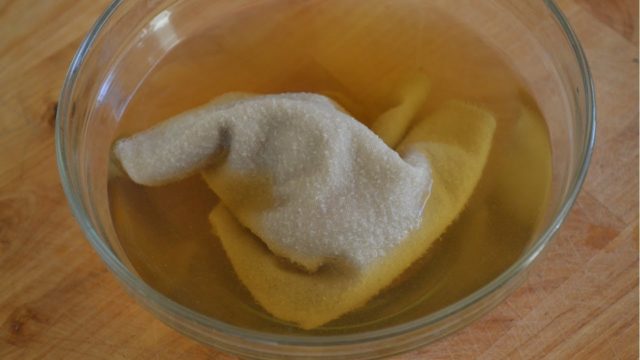
The herb is widely used in traditional medicine, while the official does not recognize it. Compresses and lotions from ivy budra are used for many skin pathologies: boils, wounds and ulcers, conjunctivitis, as well as for gout. Infusion and tea are good for pleurisy, bronchitis, severe cough, attacks of bronchial asthma. The herb is useful as a prophylactic agent for the following pathologies:
- abscesses;
- fractures;
- burns;
- hemorrhoids;
- stomatitis;
- sore throats of a bacterial nature.
Infusions in low concentrations can be used for douching for some gynecological diseases.
Photo of ivy budra
A photo and description of the budra herb will help to correctly identify the plant and collect it for further treatment.

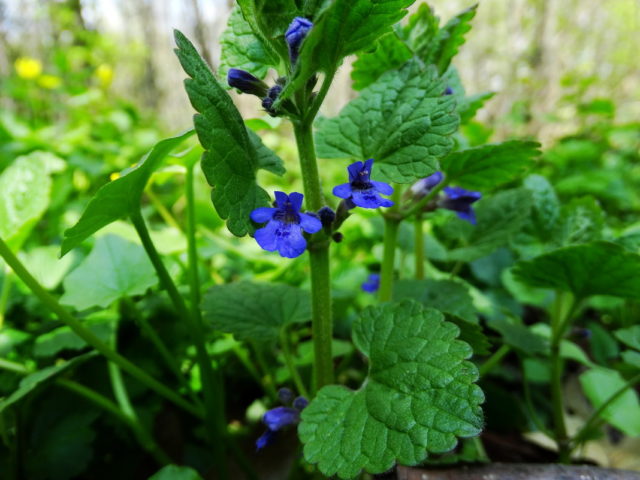
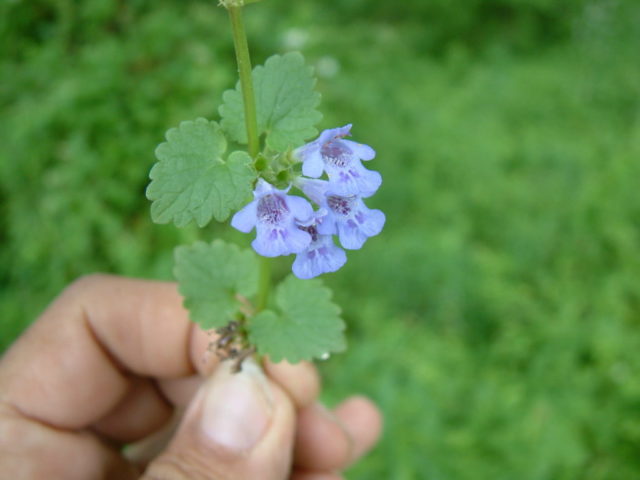
Conclusion
Medicinal properties and contraindications to ivy bud are well known to herbalists. The herb is very toxic and that is why you need to consult a specialist before starting treatment. He will warn about contraindications, advise the dosage and determine the course of treatment.

